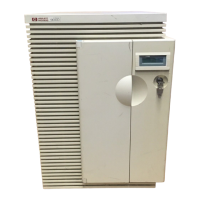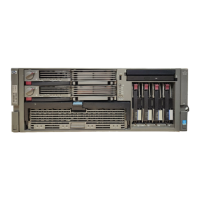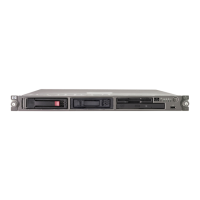Memory Configuration Guidelines C-2
.
A module is a pair of SIMMs or DIMMs. Memory for your system is purchased and installed only in
modules; never install just one SIMM.
A pair of modules is four SIMM cards.
Configuring Memory for Optimum Performance
For OPTIMUM memory performance, memory must be installed in a particular slot sequence. This section
provides an overview and then detailed procedures for both single- and dual-extender systems.
If your memory is not configured for optimum performance, the warning, Memory not optimized for
performance, appears when you boot the system. Your memory will still work, but your system’s
performance may be degraded.
On HP3000/979KS and HP9000/K250/K260/K450/K460/Kx70/Kx80 systems, non-optimized memory
has another impact. The firmware includes a new user-configurable flag called auto start. If the flag is set
to OFF and selftest detects aperformance degradation when you boot, it will inhibit autoboot and
autosearch. If you’re not sure whether a warning was displayed (i.e., warnings may have scrolled off your
console), you can re-display any warning messages. From the Information menu in the user interface, use
the WA[rn] command to see any warning messages that came up during the boot.
a. See Table C-1., “OS Support Matrix,” on page C-15.
256MB SIMM + 256MB SIMM = one 512MB module
128MB SIMM + 128MB SIMM = one 256MB
a
module
64MB SIMM + 64MB SIMM = one 128MB module
32MB SIMM + 32MB SIMM =
one 64MB
a
module
16MB SIMM + 16MB SIMM = one 32MB module
A set of 2 same-size SIMMs = 1 module
A set of 4 same-size SIMMs = 1 pair of modules

